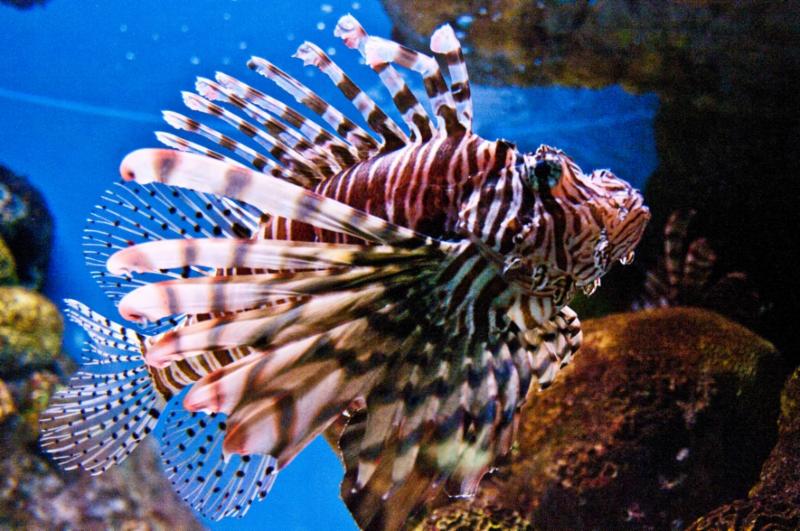McGraw's
Water Initiative Makes 1st Splash
The McGraw Center for Conservation Leadership's Heartland Waters Initiative - a proposal to harness technology and unleash innovative financing for conservation in the upcoming Farm Bill - had its unofficial national unveiling at the U.S. Water Alliance's national "One Water Summit" in New Orleans at the end of June.
Making the presentation was Alex Echols of Virginia, who serves as the Center's team leader on the project. He led off a panel discussion that included another team member: Roger Wolf, director of environmental programs and services for the Iowa Soybean Association. A third team member, Kevin Shafer, is executive director of the Milwaukee Metropolitan Sewerage District and chairman of the water alliance's board of directors.
Echols and Wolf were part of a discussion on "Embracing the Transformation: One Water and Sustainable Agriculture." It was especially appropriate for McGraw to be a part of the discussion, as the Heartland Waters Initiative aims to improve water quality across the continent by promoting ways to filter agricultural runoff.
It is hoped that the initiative's proposals will be included in the Farm Bill, the single most important piece of federal legislation for conservation.
|
|

Poll Finds Bipartisan Agreement on Conservation
By Kristyn Brady/TRCP
Photo by Lara Eakins/flickr
A national survey of 1,000 voters who identify as hunters or anglers was conducted online and over the phone in May 2017, and the data show:
- 97% agree that protecting and conserving public lands for future generations is important
- 95% agree it is important to maintain public lands infrastructure, like roads, trails, campgrounds, and historic sites
- 87% want no cuts to conservation in the federal budget
- 82% support the BLM's plans to conserve the greater sage grouse
- 4 in 5 support Clean Water Act protections for headwater streams and wetlands
- 77% of Republicans and 80% of Democrats support keeping the number and size of existing national monuments that offer hunting and fishing
"In today's polarized political climate, conservation has become a partisan issue with decision makers, but hunters and anglers strongly support conservation policies across the board, whether they're Republican, Democrat, or Independent," says Whit Fosburgh, president and CEO of TRCP.
|
Fire May be
Best Hope
for Fighting
Wasting Disease
By Carl Zimmer/The New York Times
Photo by Deb Watson/flickr
Mark D. Zabel wants to set some fires.
Dr. Zabel and his colleagues are developing plans to burn plots of
National Park Service
land in Arkansas and Colorado. If the experiments turn out as the researchers hope, they will spare some elk and deer a gruesome death.
Across a growing swath of North America, these animals are dying from a mysterious disorder called chronic wasting disease. It's caused not by a virus or bacterium, but a deformed protein called a prion.
When ingested, prions force normal proteins in the animal's body to become deformed as well. Over the course of months, prions can gradually wreck the animal's nervous system, ultimately killing it.
This year is the 50th anniversary of the discovery of chronic wasting disease. In the September issue of Microbiology and Molecular Biology Reviews, Dr. Zabel, an immunologist at Colorado State University, and his former graduate student Aimee Ortega survey what scientists
have learned about the slow-spreading plague
.
|

Wiping Out Invasive Lionfish Isn't So Simple
By Brandon Keim/Anthropecene
Photo by Selbe Lynn/flickr
Since their introduction to the Caribbean in the early 1990s, Indo-Pacific lionfish have proved to be among the most troublesome invasive species around, voraciously consuming populations of native fish but rarely being eaten themselves. People have tried to control them with limited success. A new study underscores how difficult-potentially even counterproductive-controlling them is.
Writing in the journal Biological Invasions
, marine ecologists led by Nicola Smith and Isabelle Côté of Simon Fraser University describe a two-year-long lionfish culling experiment off the Bahamian island of Eleuthera. There they assigned 12 reefs to one of three treatments: lionfish kills every three months, every six months, or not at all. At regular intervals they counted populations of lionfish and native prey fish, with the latter expected to rebound after the former's demise. But that's not quite what happened.
At first, biannual and quarterly lionfish culling reduced population densities by, respectively, 80 percent and 60 percent. Native species richness rose by about 30 percent, though biomass stayed the same: there was more diversity but not necessarily more life. Then, halfway through the study, Hurricane Irene hit-and lionfish numbers exploded in its aftermath.
|

McGraw's Kerry Luft Scores at
Grand Prix
By Charles S. Potter Jr./McGraw
Photo courtesy of Kerry Luft
McGraw has a lot of which to be proud. We often think of our wonderful facilities and our beautiful property, but we should also think of the individuals who make McGraw such a special place as the McGraw "team." They do not seek accolades.
Kerry Luft, the Foundation's senior vice president and director of McGraw Center for Conservation Leadership, is a most humble man. One would not know he competes at the top level of clay target shooting in North America. He does!
In late June, Kerry won AA class at the U.S. FITASC Grand Prix at Michigan's Bald Mountain Shooting Range near Detroit. Shooters from across the U.S. and Canada participated in the weeklong event, one of the three most prestigious FITASC competitions in North America.
|
|
|
|
|
|